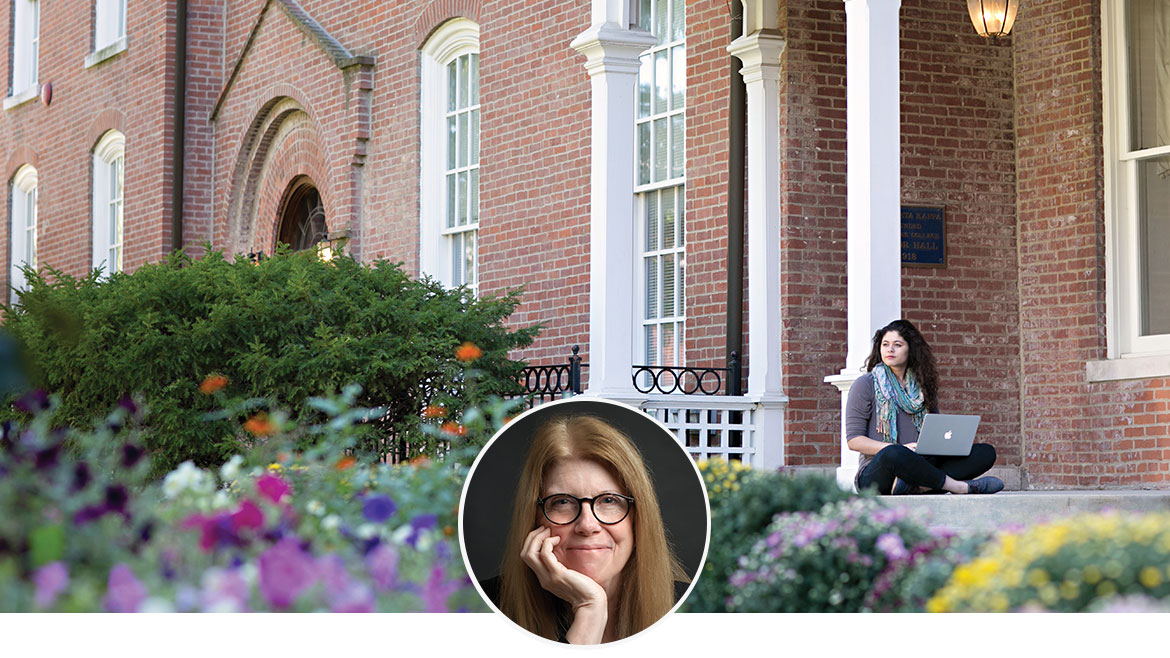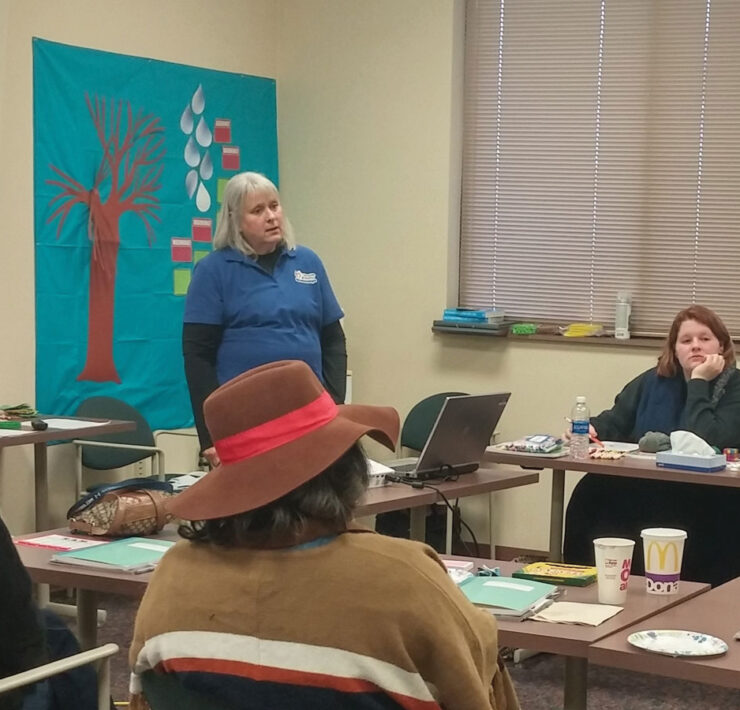A 10-Year Vision

Columbia’s universities and colleges share their hopes and plans for the next 10 years.

Stephens College
By Dianne Lynch, PhD, president
Larry Sommers, former president of Harvard University, said a few things worth remembering. My favorite? “Change happens slower than you think it will and then faster than you thought it could.”
Welcome to higher education in 2019: While state universities are struggling to maintain taxpayer support and private colleges are scrambling to carve out market distinction, families want to know why their children can’t attend any institution they can get into for free.
It’s a perfect storm of market and cultural disruption. And the higher ed sector — steeped in tradition and culturally averse to change — is scrambling to recalibrate.
At Stephens, we benefit from clarity of mission. We’re a women’s college, an institution laser-focused on instilling in our students the self-confidence, resilience, sisterhood, and sense of purpose that will define and empower their lives.
It’s what we want for our daughters — today, perhaps, more than ever. And it’s why women’s colleges are experiencing a revival of interest and enrollment.
Here at Stephens, we’re also intentional about the disciplines we offer and the quality we require; we start new things, but we also stop doing the ones we can’t deliver better than market. Call it sector segmentation or niche marketing. We call it knowing whom we serve and committing to doing it better than anybody else.
It’s our strategy for 2020, for 2030, and beyond. And it’s already transformed our curricula, our campus, and our culture.
Since 2015, we’ve invested millions in the health sciences, including new facilities, new leadership, exceptional faculty, and significant financial aid. Today, our new Center for Health Sciences is a state-of-the-art facility, and we just graduated our first class of master’s students in physician assistantship — with a 100 percent pass rate on their PANCE exams.
That’s had a ripple effect on our undergraduate health sciences program, which is our fastest growing degree. That’s because we’re creating an incubator for young women who aspire to highly competitive health care professions, from veterinary science to physician assistant studies to cancer research. And we’re developing pipeline partnerships in deep collaboration with the health care sectors we serve.
We’re investing in musical theatre, including $1.75 million in new facilities at our summer stock theatre in Iowa. It’s one of the many reasons our theatre program is ranked No. 3 in the nation this year by the Princeton Review.
And we’re funding our students’ success in creative writing, design, arts immersion education, strategic communication, and equine studies. These are programs where we consistently garner national attention and awards for competitive excellence.
Beyond the classroom, we’re investing in the soft skills that distinguish Stephens grads from the competition. Every student completes a non-academic graduation requirement of 16 workshops and interviews designed to teach work ethic, professional presentation, business etiquette, and resilience. We’re already seeing the impact in their national internships and post-grad job placement.
And we walk the talk when it comes to listening to student voices — it is, after all, their Stephens. That’s why we’ve become the pet-friendliest campus in the country. It’s why we provide free mental health and urgent-care, free Uber on the weekends, and sushi in the dining room. It’s why the president has an open-door policy, 24/7 (and, yes, red shoes).
Some things about us will never change: We’ll continue to be the campus where women can — and are expected to — do it all. We’ll remain committed to doing only what we can do better than market, from health sciences and creative and performing arts to a new AI-embedded degree we’re developing in design. And we’ll continue to offer students a safe, supportive, and accepting “home away from home” right in the heart of all the co-ed splendor of MU.
But as for everything else? We’ve said for 185 years that Stephens prepares women for the lives that await them. As those lives change, Stephens will, too. We’re good at that.
In closing, it’s probably worth noting that Larry Sommers is also the guy who suggested that the under-representation of women in science and engineering could be due to “a different availability of aptitude at the high end” — in short, that women just don’t have what it takes to succeed in STEM fields. Proof positive that even the president of Harvard isn’t always right.
Just ask our science grads.

Columbia College
By Scott Dalrymple, PhD, president
When most leaders think about the future of a college or university, they tend to think in terms of programs: what new majors or departments they’ll add. That’s good, and we do that too. But in my eyes, there’s something even more important to consider.
Ask a hundred people what concerns them about higher education today, and few will say they just can’t find the major they want. Instead, people are worried about how to pay for college. Solving that problem is what gets me excited.
Tuition pricing seems simple, but it’s often confusing and opaque. It’s easy to find a college’s posted tuition cost, but that’s just a starting point. In reality, 20 people in a classroom may all pay different tuition rates. It’s a lot like the airline industry: The person sitting next to you may have paid a lot more for her ticket or a lot less. A typical higher education classroom might include students who paid between 0 and 100 percent for their seats.
Higher education institutions track our average tuition markdown, calling it our discount rate. Amazingly, the average discount rate at private, liberal arts institutions is around 50 percent. That may sound good for students, but it’s not, really, since it’s based on a fictitious list price rather than any objective measure of value. All it really does is confuse students. (At Columbia College, our overall discount rate is approximately 12 percent, partly because we don’t inflate our list price.)
Fees are just as confounding. Few students ask about fees before they enroll, yet in some university programs, total fees can actually exceed tuition. They get you coming and going with application fees, technology fees, library fees, student activity fees, parking fees, laboratory fees, program-specific fees, transcript fees, graduation fees, and more.
Then there are books. My youngest son is a biology major at another college. (Inexplicably, he didn’t want to go where his dad worked.) Since my wife and I pay the bill, we’re painfully aware of the cost of textbooks. We pay more than $2,000 per year for his books, some of which cost $300 a piece. Our son is lucky; his parents can afford to pay. Sadly, though, textbook costs lead many college students to go without at least one book each semester. They try to scrape by without, sometimes unsuccessfully.
So what’s the solution? At Columbia College, we call it “Truition.” While we’ve had a traditional college campus in Columbia since 1851, the vast majority of our 20,000-plus students take courses online or at one of our 35 locations across the country. Those students now pay just one price (a competitive $375 per credit hour for undergraduates) which includes all costs: tuition, fees, and books. There are no hidden fees, no fine print. We’re doing for college pricing what Southwest Airlines did for airline pricing.
One reason we can do this is that we negotiate directly with major textbook publishers, buying the books ourselves and giving them to our students, who collectively saved more than $10 million last year. And saving isn’t the only advantage; now every student has every book on the first day of class, meaning nobody falls behind for financial reasons.
What does the future hold for Columbia College? I’ll give you a CBT scoop: Our faculty members are considering the possibility of bringing Truition pricing to our traditional program in Columbia, perhaps by Fall 2020. That would mean that our traditional students (and their parents) could benefit from this innovative approach to higher education.
Successful entrepreneurs listen to what people are complaining about; that’s where the opportunity is. In higher education, it’s cost. I’m a firm believer that the next great educational innovations will not be curricular or technological — they will have to do with the way people pay for a quality education.

Moberly Area Community College
By Jeff Lashley, PhD, president
The past 10 years have seen tremendous growth and success for MACC Columbia. The next ten years will bring many new opportunities and challenges as MACC continues to build on this momentum. Meeting the needs of our students, developing and maintaining a trained workforce for our business and industry partners, and serving the communities in the MACC service region will continue to be the top priorities.
To achieve these priorities, MACC will continue to develop pathways and partnerships by strengthening connections and commitments to Columbia and Boone County. Ultimately, MACC will strive to meet its mission to provide dynamic and accessible educational opportunities that empower our students and enrich our communities.
Collaboration
Higher education is more collaborative than ever before, which leads to the creation of new opportunities for our students. Collaborative partnerships have allowed MACC to offer innovative programs and pathways that simply would not have been possible as solo ventures.
Recent partnerships with K-12 districts and higher education institutions have resulted in some of MACC’s most successful programs. Thankfully, higher education institutions in our area have embraced the spirit of collaboration. MizzouMACC is a co-enrollment program between MACC and MU that has been successful in allowing students to experience the benefits of both institutions simultaneously. This program provides numerous advantages allowing eligible students to use their A+ scholarship for MACC courses, enroll in university coursework, live in MU campus housing, and ultimately have a seamless transfer experience. The students get the best of both institutions. Similar programs have been developed with Stephens College and Truman State University.
Moving forward, these programs have great potential to expand and improve the student experience and make their pathways to degrees clearer and easier to navigate.
Partnership with Columbia Public Schools has allowed MACC to offer health sciences programs in the community, and the future promises even more. In the fall of 2020, MACC and CPS plan to significantly expand dual credit and dual enrollment offerings and develop a middle college program. This will give CPS students the opportunity to graduate high school with significant college credit, even up to an earned associate degree. This partnership will expand the pathways for Columbia students as they enter the next level of higher education or the workforce.
Workforce Development
In the past 10 years, MACC has developed important relationships with business and industry partners, economic development professionals, county and city government, and the business community through the Columbia Chamber of Commerce. Building upon these relationships will be critical to meeting the current and future workforce needs of Columbia and Boone County.
Moving forward, we will partner with industry to develop programs for high-demand jobs. We will replicate the model used to develop our mechatronics program, which addresses the workforce needs of advanced manufacturing. Many workforce needs of the future have yet to be defined, so it is essential that we partner with business and industry to define and develop the necessary training programs together. We must also leverage resources and programs from both state and federal sources to help support these programs, which are often expensive to start and maintain. Opportunities are abundant in areas such as apprenticeships, health sciences, information technology, logistics, cybersecurity, a variety of advanced manufacturing programs, and wind energy, to name a few.
Forward-Thinking & Quality Focused
Over the next 10 years, MACC must be forward-thinking. We intend to be at the table anticipating workforce needs and technological advances. Technology has changed higher education as dramatically as it has changed our personal lives. It is impacting current jobs and will shape future careers. Things that did not exist 10 years ago are embedded in our culture and lives today.
While we will remain nimble to address all of the knowns and unknowns the future will bring, MACC will also stay focused on an unchanging principle for community colleges, which is our commitment to quality teaching and learning.

University of Missouri
By Latha Ramchand, provost and executive vice chancellor for academic affairs
For an increasing number of college students, the educational requirements for their dream job and the ground covered by a college degree are not in perfect alignment. As the economy and the needs of the workforce change, the value higher education provides to students should also be rethought and adapted to fit the changing environment.
Consider this: In 2016, the largest demand for labor in Missouri was in the health care sector. Health care jobs comprised more than 20 percent of job postings that year, while only 9.8 percent of online job seekers sought these positions.
This is a classic problem of supply and demand, and as an educational institution, the University of Missouri is well-suited to tackle this problem. For someone who desires health-related knowledge but does not want to pursue a medical degree that isn’t required for their job, a different approach to education is needed, one in which traditional degrees are not the only path to success.
At MU, students have a range of options to choose from, and the options are relevant to the workforce needs of Missouri. Degrees in the health professions, for example, range from undergraduate degrees in communication science and disorders to graduate degrees in applied behavior analysis and diagnostic medical ultrasound.
The next decade will see us build on a network of options for students of all backgrounds and career tracks. From online programs to new certifications, our goal is to offer content that participants can choose from and learn via modalities that suit their style of learning, be it face-to-face, online, or through a hybrid approach. Being relevant and rigorous is key to our vision, and this means we have our ears tuned to the needs of the workforce in the state of Missouri and beyond.
This also means we must become more agile as an organization so we can meet the needs for “just-in-time learning.” Degrees are starting points to a career of lifelong learning. Indeed, the typical millennial is expected, on average, to change jobs 11 times during their working lives, and that means continued learning and retooling.
While a single degree once secured a particular place in the job market, the workforce now demands more. Required competencies often span multiple disciplines. This is where certifications will play an increasing role. Offering credentials without a degree — our graduate-level certificate in the fast-growing field of data science and analytics, for instance — is one way we’re addressing market needs.
Increased flexibility is not solely the domain of certificates, of course. Mizzou Online allows those who might otherwise be unable to attend a university to earn an education, an opportunity that goes hand in hand with certification programs that allow for a specific, tailored learning experience. Soon, students will also be able to supplement their education with classes from any of the four UM System campuses, widening access to a variety of programs and making self-driven education more convenient and practical than ever before.
Moreover, online education can have a positive impact on the on-campus classroom, opening up in-person class time for higher-level discussions and allowing instructors to focus on facilitating discussions and critical thinking exercises.
In the end, each of these evolving aspects of our academic programs are part of a customer-centered ethic. We must be nimble to meet the needs of our students, meet the workforce needs of today, and anticipate the future of work tomorrow. As we adapt, the success of our students translates into success for our state, our nation, and beyond.








